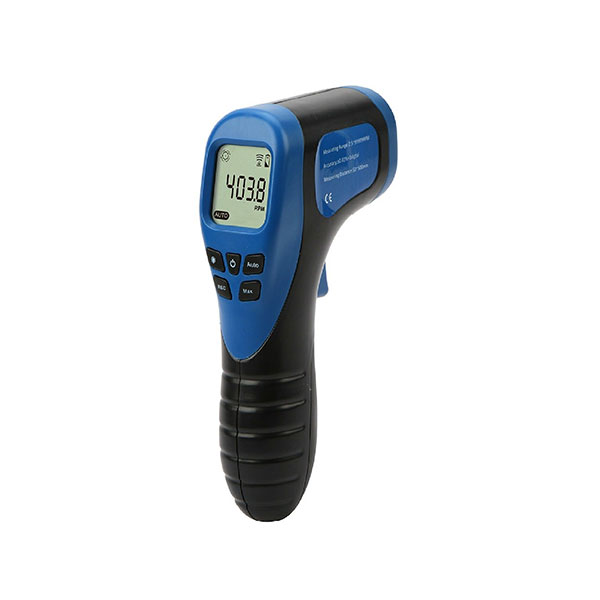Exactly How a Tachometer Assists Monitor Engine Health and Performance
Exactly How a Tachometer Assists Monitor Engine Health and Performance
Blog Article
The Relevance of a Tachometer in Keeping An Eye On Engine Rate and Efficiency in Automotive Applications
In the realm of vehicle engineering, the tachometer stands as an essential tool in the chauffeur's arsenal, providing a direct window right into the inner operations of a vehicle's engine. Beyond its function as a mere gauge of transformations per minute (RPM), the tachometer serves as a crucial device for fanatics and professionals alike, using real-time insights into engine performance and health.
Importance of Keeping Track Of Engine RPM
Checking engine RPM, or transformations per min, is an essential element of automotive maintenance and performance examination. Engine RPM directly correlates with the rate at which the engine's crankshaft revolves, suggesting just how rapidly the engine is running - tachometer. By keeping track of RPM, technicians can analyze the wellness of the engine, identify possible problems, and fine-tune efficiency. An abnormal RPM analysis might indicate issues such as engine misfires, defective stimulate plugs, or concerns with the fuel distribution system. Consistently high RPM readings could indicate aggressive driving routines or the demand for a greater equipment shift to enhance fuel performance.
Additionally, keeping an eye on engine RPM is vital for performance assessment in racing and high-performance cars. In recap, keeping track of engine RPM is not just essential for discovering issues but likewise for enhancing engine efficiency in different vehicle applications.

Benefits of Real-Time Data
In automobile applications, real-time information plays an essential duty in giving instant insights into the efficiency and condition of the lorry. By continuously checking numerous criteria such as engine rate, temperature level, gas usage, and a lot more, real-time data provides countless advantages that add to boosted performance and security when traveling.
In addition, real-time data assists in efficiency optimization by providing prompt comments on driving habits and engine effectiveness. Motorists can adjust their actions in real-time based on this information to achieve better fuel economic situation and extend the life-span of their car.

Additionally, real-time data plays a vital duty in contemporary auto diagnostics, enabling professionals to rapidly identify and address breakdowns. This leads to decreased downtime, reduced maintenance costs, and eventually, boosted overall automobile integrity and longevity (tachometer). By taking advantage of the power of real-time information, automotive stakeholders can make educated choices that favorably impact both the performance and durability of the car
Influence on Gear Shifts
The tachometer plays a critical role in maximizing equipment shifts by offering real-time engine speed data to the driver. When coming close to the redline on the tachometer, it indicates the chauffeur to upshift to avoid over-revving the engine and triggering potential damages.
In addition, the tachometer help in accomplishing smoother gear changes, specifically in hand-operated transmissions. By keeping an eye on engine speed, chauffeurs can execute equipment changes at site the optimal RPM range, reducing snagging movements and reducing endure the transmission parts. This precision on duty adjustments not just improves driving convenience however likewise adds to sustain efficiency.
Enhancing Gas Effectiveness
Provided the critical duty the tachometer plays in enhancing gear changes for performance and engine wellness, it directly adds to making best use of gas efficiency in auto applications. By providing real-time responses on engine speed, the tachometer aids chauffeurs in preserving the most efficient RPM range for fuel economic situation. When vehicle drivers constantly keep track of the tachometer and readjust their driving behaviors appropriately, they can stay clear of unnecessary gas usage created by over-revving or lugging the engine.
In addition, the find more tachometer helps vehicle drivers identify one of the most fuel-efficient gear to be in at any type of provided moment, stopping the engine from functioning more difficult than needed. This is particularly critical during acceleration and travelling, where remaining in the right gear can substantially impact fuel performance. Additionally, the tachometer can inform vehicle drivers to potential mechanical issues that might be adversely influencing gas economy, such as a slipping clutch or a stopped up air filter. To conclude, the tachometer functions as an important tool in improving gas effectiveness by advertising optimum driving behaviors and identifying areas for improvement in the car's performance.

Optimizing Engine Long Life
The tachometer's duty in checking engine rate and performance contributes in ensuring the long life of vehicle engines. By using the tachometer effectively, vehicle drivers can maximize engine durability through conscious RPM administration. Regularly revving an look at here engine expensive can bring about extreme wear and tear on critical parts, such as the pistons, valves, and bearings. With time, this can lead to decreased engine efficiency and potential breakdowns. Keeping an eye on the tachometer permits chauffeurs to stay within the suggested RPM variety for their automobile, avoiding unnecessary strain on the engine and extending its life-span.

Conclusion
Finally, the tachometer plays an important duty in keeping an eye on engine rate and performance in auto applications. By providing real-time information on RPM, it enables for reliable gear changes, enhanced fuel performance, and optimized engine longevity. This device is essential for preserving optimum engine performance and making certain the overall performance of a lorry.
Report this page